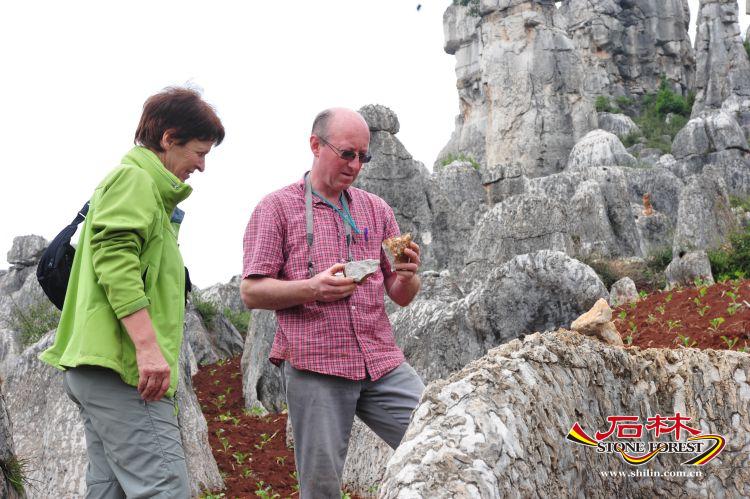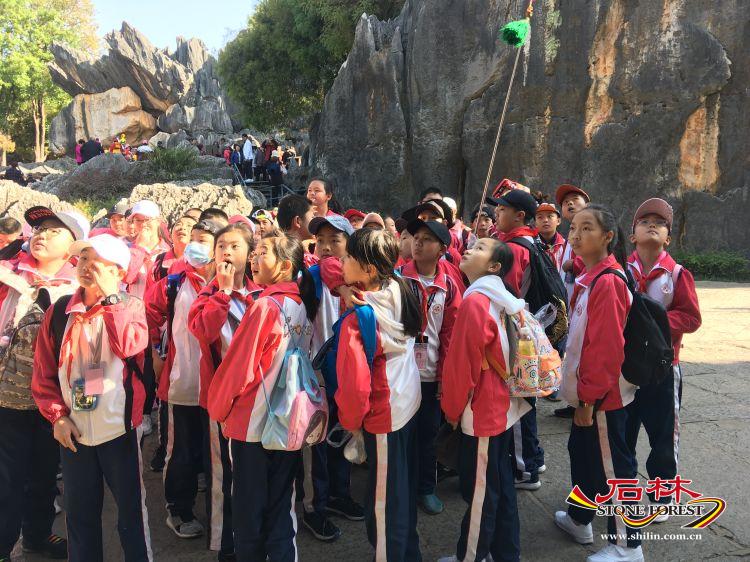- Children from Shijin Kindergarten Made a Study Trip to Shilin UGGp
- Have a spring date with Shilin flowers
- Call for hosts of the 12th International Conference on UNESCO Global Geoparks in 2027
- Call for applications: UNESCO Global Geopark Mentorship Exchange
- Representatives of Changshan Aspring UGGp Visited Shilin UGGp
- Shilin UGGp Visited Xingyi Aspiring UGGp
- Children from Peiqi Kindergarten Visited Shilin UNESCO Global Geopark
Broader Significance of the Shilin (Stone Forest) Geopark
1.Tourism
Because of its geographical uniqueness and exceptional natural beauty, the Stone Forest has been a tourist attraction since ancient time. Pioneer tourists and adventurers explored part of the Geopark area in as early as the fourteenth century (Yuan Dynasty), leaving many descriptions, poems, and inscriptions praising the marvelous natural landscape.
In 1931 the Stone Forest formally became a park for public enjoyment; in 1982 it was designated by the state government as a key scenic and historic area and in 2001 as a national geopark, and a global geopark in 2004.

The Shilin (Stone Forest) has become one of China's major tourist destinations. It is recorded that over 30,000,000 tourists have visited the Geopark; in 2001 alone it appealed 1,500,000 visitors. Tourism highlighted by the Stone Forest has become one of Shilin County's pillar industries, and“Stone Forest”has become a big name far beyond academic field.
2.Local history
Sani people, a branch of the Yi nationality, are the dominant minority group settled in the Shilin area. A number of archeological relics of Paleolithic, Neolithic and Brass ages have been found in the adjacent Lunan basin, and those ancient tribes are believed the ancestor of the present native people. There are also rock paintings of 1,700 years old in the stone pillars. All these show that there has been a long- standing relationship between the human society and stone forest karst landform. Partly because of the low local relief and positioned in the traffic way between Yunnan and neighboring east provinces, not only agriculture civilization has been developed in the Lunan basin but also a distinctive relation between native people and the karst landform has been established through history.

Rock paintings

Stone carvings in the stone pillars
3.Culture
The Yi nationality, particularly the Sani people, has developed their colorful culture and custom in the Stone Forest area. Because there is an obvious linkage between the culture and the stone forest karst, the culture has been regarded as“stone culture”or “stone forest culture”. Folktales, poems, housing styles, festivals and celebrations all exhibit the long historic connection with the stone forest. The epic Ashima enjoys great popularity. The lively and bustling“Torch Festival”, the bright and cheerful dance“Axitiaoyue”(Dance to music), and the affectionate song "Guests from afar please stay here" are known far and wide.

Sani embroidery

Bull fighting
4. Ecology
Under subtropical monsoon climate, the Stone Forest area features typical plateau karst ecosystem. The Geopark is an important water source area for both Lunan basin and the Pearl River.
5. Teaching and research
Since the early twentieth century many scholars, experts, and research bodies of both domestic and abroad have come to the Shilin (Stone Forest) to carry out studies on geology, geography, biology, history, anthropology, ethnic culture and tourism and management.
There are abundant publications. The Geopark is not just a hot tourist attraction but has long been acting as a research and teaching base. There is research fund established by the Shilin Geopark Administrative Bureau. A number of international karst workshops have been held at the Geopark.


6.Home to protected and endangered species
Within the Shilin Geopark, eight plant species under state protection, twenty plant species under province protection, nearly 100 rare plant species endemic to the County, Kunming or Yunnan. Seven mammal species and eight bird species contained in the Geopark are under class two national protection.

Ottelia acuminata floating in the Changhu Lake of the Shilin UGGp
